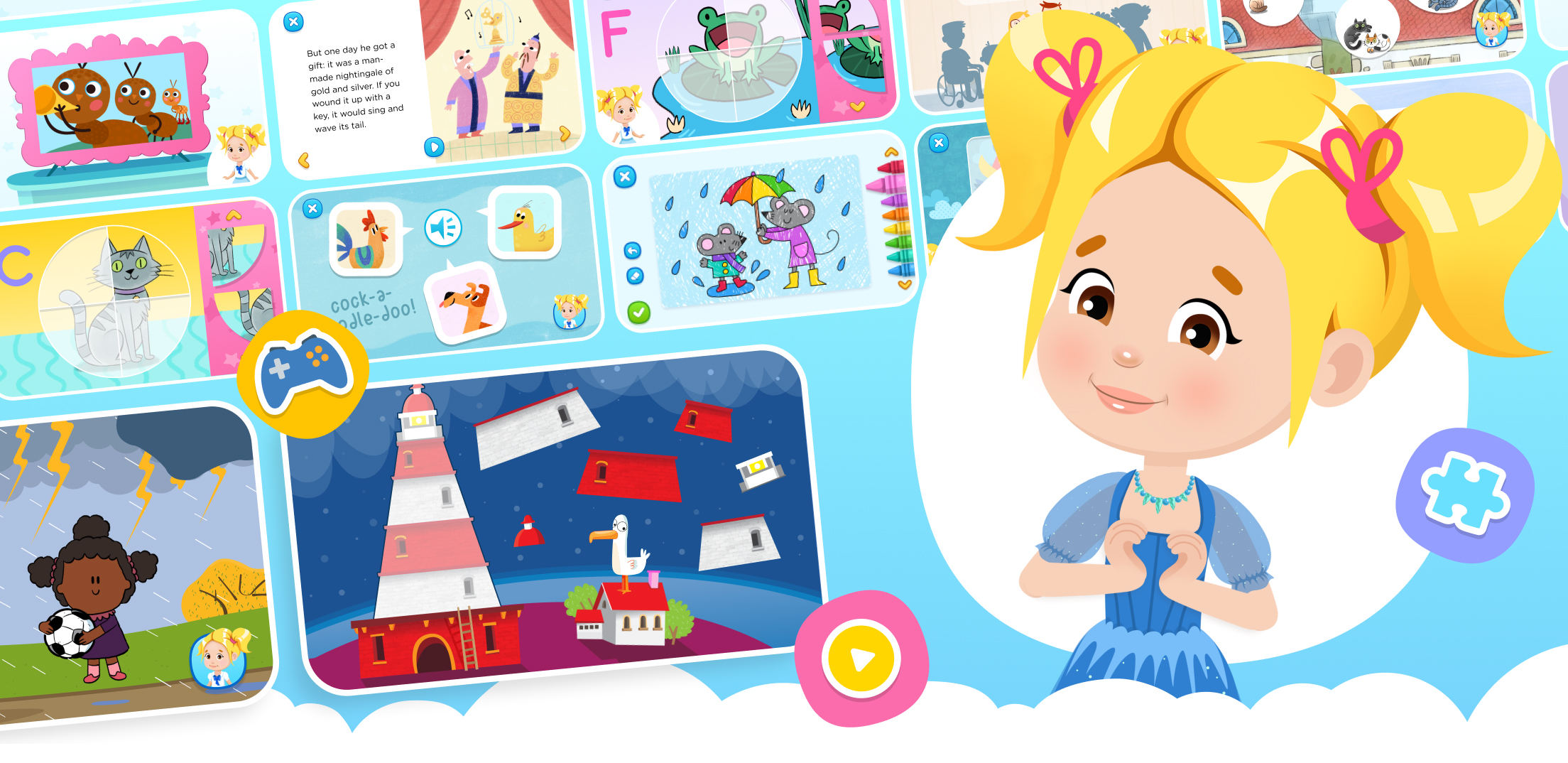Normal Reading Comprehension worksheets activities for Ages 3-4
8 filtered results
-
From - To
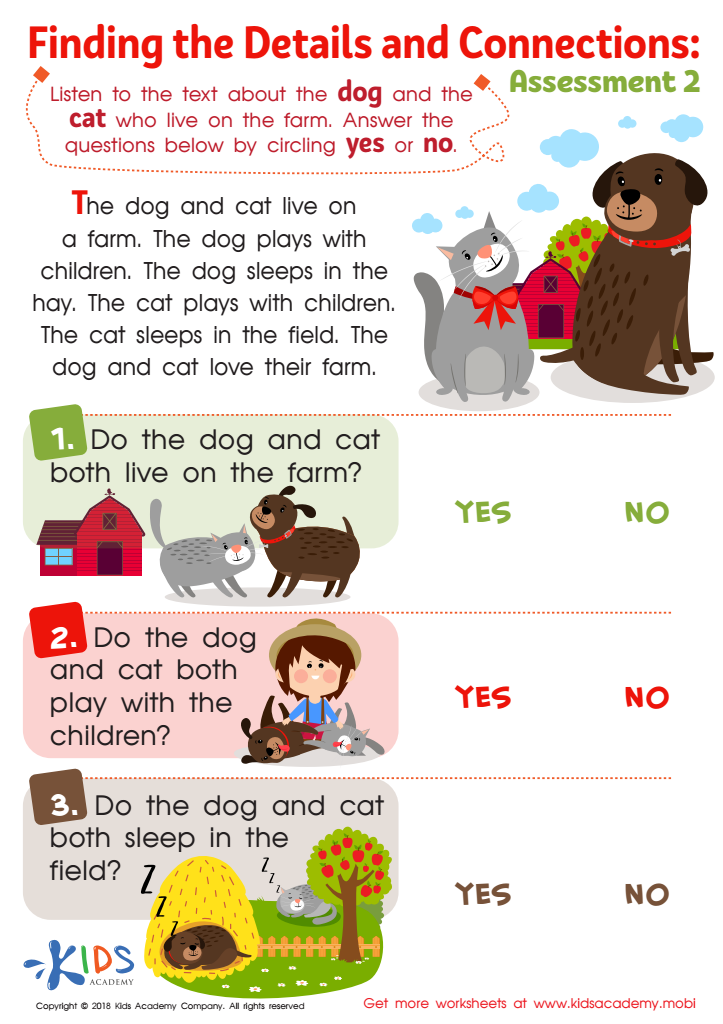

Finding the Details and Connections: Assessment 2 Worksheet


Questions About Informational Texts: Assessment 1 Worksheet


Craft and Structure: Assessment 2 Worksheet


Questions About Stories: Assessment 2 Worksheet
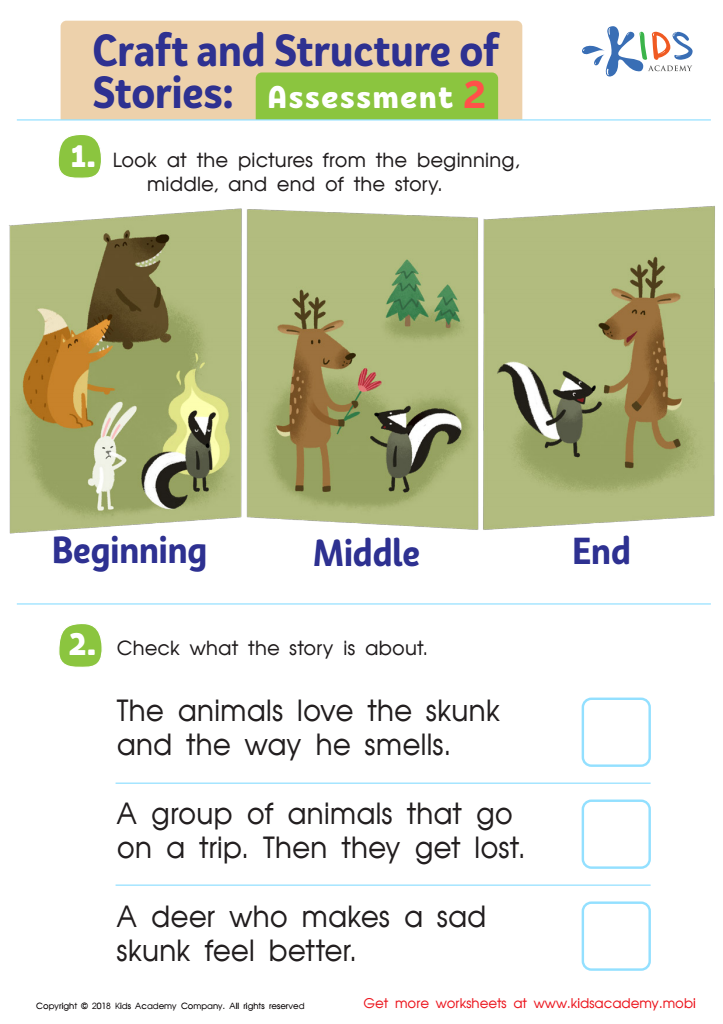

Craft and Structure of Stories: Assessment 2 Worksheet
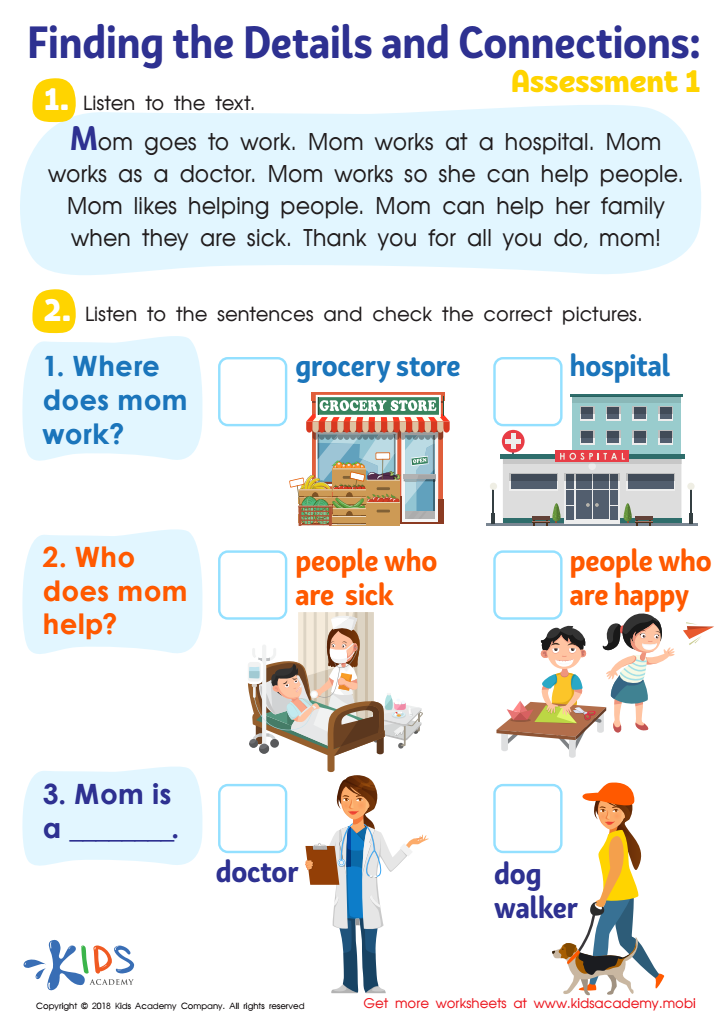

Finding the Details and Connections: Assessment 1 Worksheet
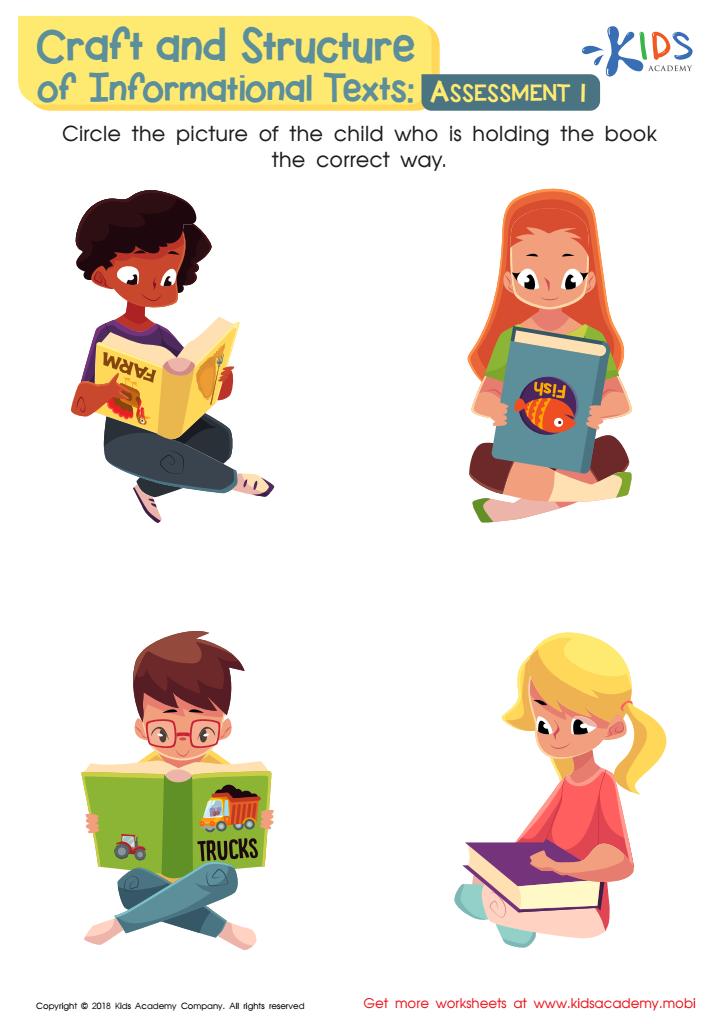

Craft and Structure of Informational Texts: Assessment 1 Worksheet
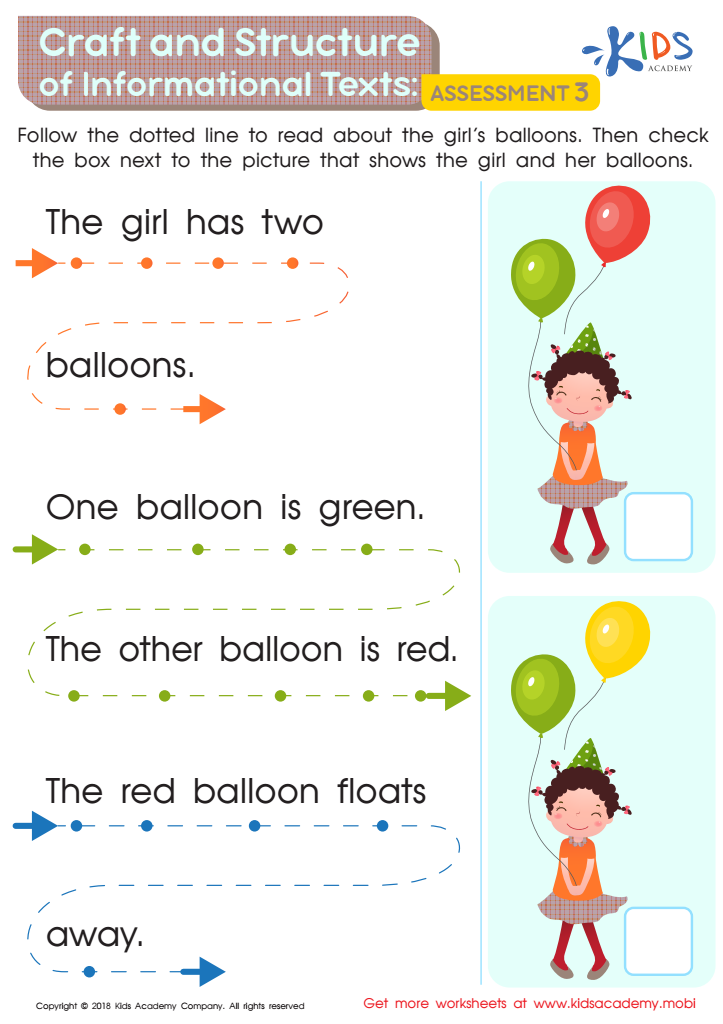

Craft and Structure of Informational Texts: Assessment 3 Worksheet
Normal Reading Comprehension worksheets activities are a cornerstone of language education, offering numerous benefits that make them an indispensable tool for learners of all ages. These activities are designed to improve a student's ability to understand and interpret text, which is a fundamental skill not only in academic settings but in everyday life as well.
First and foremost, Normal Reading Comprehension worksheets activities enhance a student’s reading skills. They encourage students to read closely and carefully, teaching them to pay attention to details that might otherwise go unnoticed. This attention to detail helps in grasping the nuances of language and text, enabling students to understand complex ideas and themes presented in written materials.
Moreover, these activities foster critical thinking and analytical skills. Students are often required to answer questions that demand more than just surface-level understanding. They must analyze characters, infer motives, deduce themes, and evaluate arguments. This type of analysis is crucial for academic success across all subjects and cultivates a thoughtful, questioning approach to information in general.
Another significant benefit of Normal Reading Comprehension worksheets activities is the improvement of vocabulary and language skills. As students encounter new words and phrases within the context of their reading materials, they naturally expand their linguistic repertoire. This exposure to varied vocabulary not only aids in comprehension but also enhances students’ ability to express themselves more effectively and confidently.
Lastly, these activities are versatile and can be tailored to suit various learning styles and difficulty levels. Whether a student is a visual learner who benefits from chart-based questions or someone who prefers more textual analysis, worksheets can be customized to meet their needs. This adaptability ensures that all students can benefit from these activities, regardless of their proficiency level.
In conclusion, Normal Reading Comprehension worksheets activities are an essential tool in developing a wide range of skills that are beneficial not just academically, but in real-world scenarios too. By enhancing reading skills, fostering critical thinking, expanding vocabulary, and offering adaptable learning opportunities, these activities prepare students for success in numerous endeavors.
 Assign to My Students
Assign to My Students





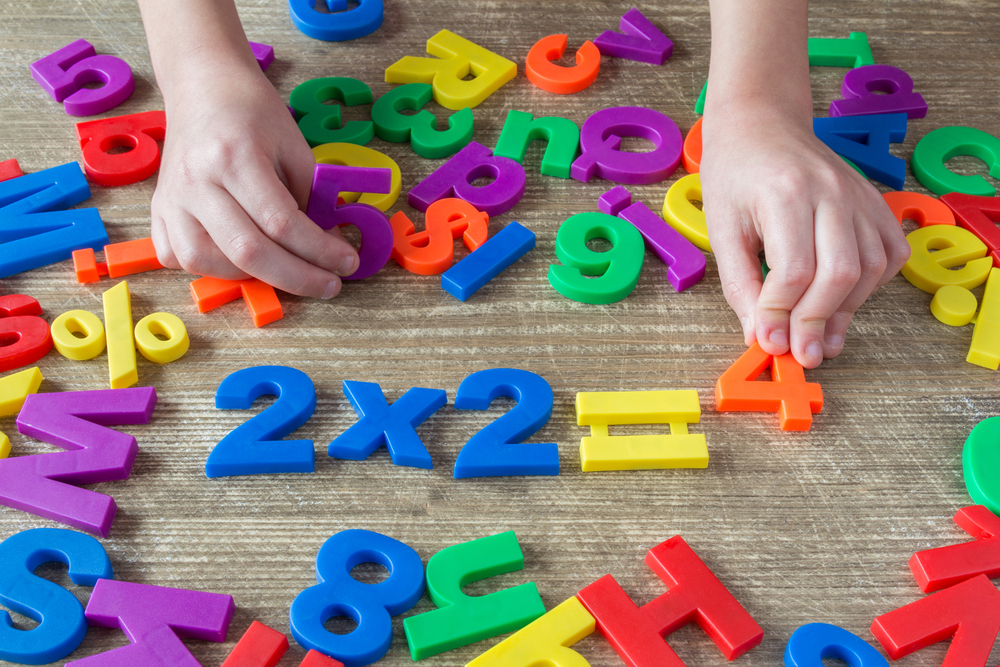

.jpg)
